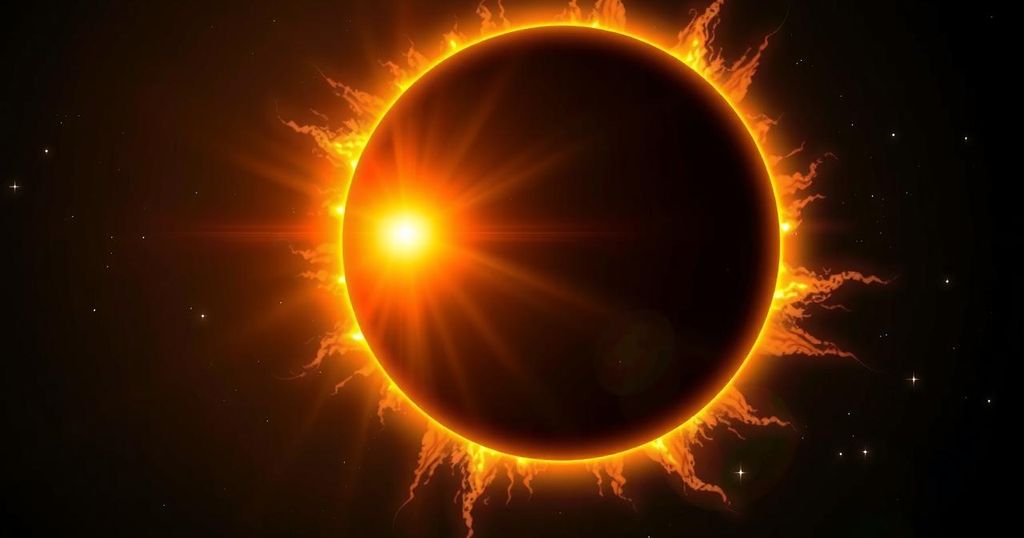Why the 2024 Total Solar Eclipse Will be Such a Big Deal
- The 2024 total solar eclipse is anticipated to last longer than the one in 2017.
- This year’s eclipse path will cover a larger number of people across North America.
- The event offers a unique research opportunity for scientists studying solar activity.
- Ground observers may witness exciting solar phenomena like coronal mass ejections.
- The upcoming eclipse encourages engagement from both scientists and amateur astronomy enthusiasts.
Get Ready for a Cosmic Show Like No Other
The Anticipation of the 2024 Total Solar Eclipse The upcoming total solar eclipse, set to unveil itself on April 8, is expected to be an extraordinary astronomical event. Unlike the last total eclipse that graced the U.S. in 2017, this one promises to be longer, darker, and more dazzling. For millions across the states, stepping outside their homes might just offer a once-in-a-lifetime opportunity to witness the spectacle of the moon completely obscuring the sun’s face, in what some might call the cosmic show of the decade.
What’s Driving the Excitement for This Eclipse?
Longer Duration and Active Solar Performance In April, the moon’s position in its orbit will be quite near Earth, giving it a larger appearance in the sky. This positioning translates into an eclipse that lasts almost 4½ minutes—nearly two whole minutes longer than what we experienced in 2017. Compounding this, the sun will be at a peak of its 11-year activity cycle, ensuring that vibrant plasma streamers will emanate from the sun’s atmosphere. The heightened solar activity draws attention because it also increases the likelihood of a coronal mass ejection. Such features will allow both casual stargazers and scientific observers something special to enjoy during the event.
The Science Behind This Extraordinary Opportunity
Accessible Viewing for Millions Cartographer Michael Zeiler highlights that roughly 32 million people will be within the path of totality this time around—almost two and a half times the number during the last eclipse. The convenience of this path means that major metropolitan areas along the East Coast, some just a couple hundred miles from totality, will have an ideal front-row seat. The accessibility to the path means that not just a select few, but many can experience the spectacle firsthand, adding to the excitement and buzz around this astronomical moment. The fun doesn’t stop there—this path allows for expansive research opportunities thanks to established radar systems that monitor the charged atmospheric particles, giving scientists data during the eclipse’s unique environment.
Keeping a Close Eye on Solar Activity
Understanding Coronal Mass Ejections in Detail The elevation in solar activity during this upcoming eclipse will likely afford scientists a unique opportunity to study coronal mass ejections simultaneously from both Earth and space. Notably, instruments aboard the European Space Agency’s Solar Orbiter and NASA’s Parker Solar Probe will capture the event from the side while ground observers have a chance to see the action firsthand. This pairing of terrestrial and satellite observations is a first during an eclipse at a solar maximum, marking a significant chance for research. Astrophysicists want to better understand how these solar phenomena can disrupt our communication and power grids here on Earth—there’s a lot riding on this event, both literally and figuratively.
Engaging the Public in a Shared Experience
Innovative Experiments to Gather New Data As researchers prepare for the probability of new discoveries, they are gearing up with several experiments returning since the last eclipse. Flying instruments aboard high-flying WB-57F jets, physicists aim to take advantage of the extended duration of this eclipse for more in-depth data. There’s a hint of excitement in the air as improvements in technology promise clearer insights into solar behavior. On the ground, other researchers plan to use an ambitious array of equipment, including newly designed spectrometers and weather balloons that will capture atmospheric changes in real time. Amateur astronomers are also stepping up, ready to contribute with their own observations.
A Farewell to Eclipses—For Now
Looking Towards Future Eclipses Following the spectacle of the April 8 eclipse, the next totality will not grace North America for two decades. Alaska will catch a glimpse of a solar show in 2033, but for the bulk of the continent, it’s a long wait. However, as scientists emphasize, each eclipse is a chance to glean new scientific findings. As April approaches, the mounting anticipation grows, ensuring that whether you witness the total eclipse or just its partial phases, this is an event that can’t be ignored. It promises to enlighten the skies and inspire wonders in both science and the hearts of those lucky enough to see it.
In summary, the 2024 total solar eclipse presents a remarkable chance to observe a longer duration and a more active sun compared to previous eclipses. Moreover, its path of totality offers access to millions, making participation by casual observers much more feasible. Lastly, the scientific opportunities intertwined with this event promise to broaden our understanding of solar phenomena, from coronal mass ejections to atmospheric behaviors—truly a spectacular occasion on the cosmic calendar.




Post Comment